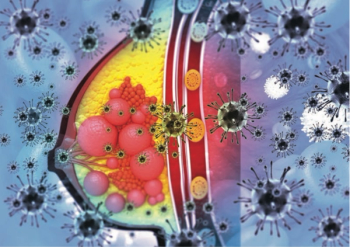
- Oncology Vol 29 No 4_Suppl_1
- Volume 29
- Issue 4_Suppl_1
(S024) Impact of Pelvic Radiotherapy on Sexuality Reported by Women Surviving Cancer
Reports of sexual changes in women after cancer treatment are highest in patients receiving pelvic radiation, particularly brachytherapy. Rates of sexual changes are higher than expected in patients receiving radiation elsewhere and/or chemotherapy alone. These findings support the need for both adequate patient counseling prior to treatment and support for late-effect management afterwards.
James M. Metz, MD, Erin Davis, Carolyn Vachani, Margaret K. Hampshire, Christine E. Hill-Kayser, MD; University of Pennsylvania
INTRODUCTION: Many women are cured of pelvic malignancies through multimodality treatment. Some treatments, including radiation, are recognized to impact female sexual function in the long term; however, patient perspectives on these outcomes are not well understood, nor are contributions of other treatment forms. Here, we describe patient-reported outcomes after pelvic radiation, as well as radiation elsewhere and chemotherapy alone.
METHODS: Patient-reported data were gathered via convenience sample frame from cancer survivors voluntarily using an internet tool for the creation of survivorship care plans. The tool requires entry of data regarding diagnosis, demographics, and treatments and provides customized guidelines for future care. It is publically available and free of charge, with > 300,000 total users since 2007. During use of the tool, survivors are queried regarding their experience with late effects associated with specific treatments.
RESULTS: The tool was used by 7,258 female cancer survivors from November 2012–October 2014. Overall, the group was 82% Caucasian, with a median age of 51 years (range: 18–84 yr) and a median time of 2.5 yr from diagnosis (range: < 1–38 yr). Of these patients, 503 had received pelvic radiation as part of treatment for gastrointestinal or gynecologic malignancies (37% vs 63%, respectively). Of the pelvic radiation group, 78% reported receiving external beam radiation (EBRT) with x-rays, 35% received brachytherapy (55% in conjunction with EBRT and 45% alone), and 3% received proton radiation. When the entire group was queried, “Have you experienced sexual changes since completing treatment?” 42% responded “yes,” 23% answered “no,” and 17% responded “I don’t know.” The brachytherapy group was more likely to respond “yes” (56%) than the EBRT-alone group (40%) (P < .05).
The pelvic radiation group was compared with patients receiving radiation outside of the pelvis. Of this group, 34% responded “yes,” 32% responded “no,” and 34% responded “I don’t know” (P < .05 when compared with the pelvic radiation group). The pelvic radiation group was also compared with patients receiving chemotherapy alone, with 38% responding “yes,” 29% responding “no,” and 33% responding “I don’t know” (P < .05).
CONCLUSIONS: Reports of sexual changes in women after cancer treatment are highest in patients receiving pelvic radiation, particularly brachytherapy. Rates of sexual changes are higher than expected in patients receiving radiation elsewhere and/or chemotherapy alone. These findings support the need for both adequate patient counseling prior to treatment and support for late-effect management afterwards.
Proceedings of the 97th Annual Meeting of the American Radium Society-
Articles in this issue
Newsletter
Stay up to date on recent advances in the multidisciplinary approach to cancer.

















































































